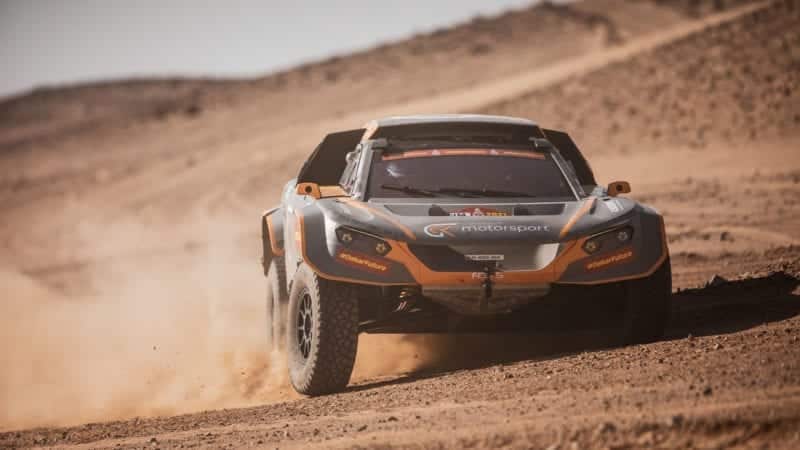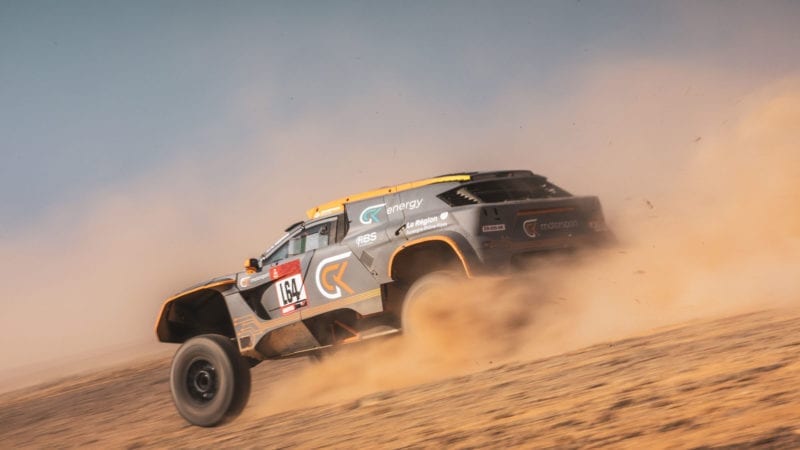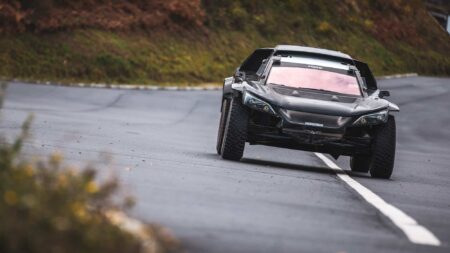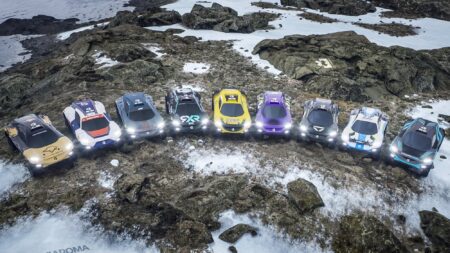The ASO says it aims for all vehicles entered in Dakar to be powered by green energy by 2030.
GCK has also been tasked by ASO to help power its green revolution, with the event aiming to be completely powered by renewable energy by 2024. During the NEOM stage a ‘green bivouac’ was installed by the renewable energy company as an initial demonstration of intent.
Described by GCK as ‘bespoke mobile photovoltaic solution’, 630 solar panels over 1200m2 produced between 1.2 Megawatts (MW) a day, helping to power the media centre, TV wall, briefing area, race officials’ office and a ‘fully integrated charging solution’ for electric vehicles. The electric GCK e-Blast 1 was the vehicle on hand to show that it worked.
The solar panel field collected 300kW to 600kW during the day to be redistributed at night. The ASO hopes to have spread these energy solutions across its entire event in just three years.
“We’re excited to play a pioneering part in the development of motorsport’s future sustainable transformation,” said stunt driver, rallycross entrant and now President of GCK Guerlain Chircherit.




